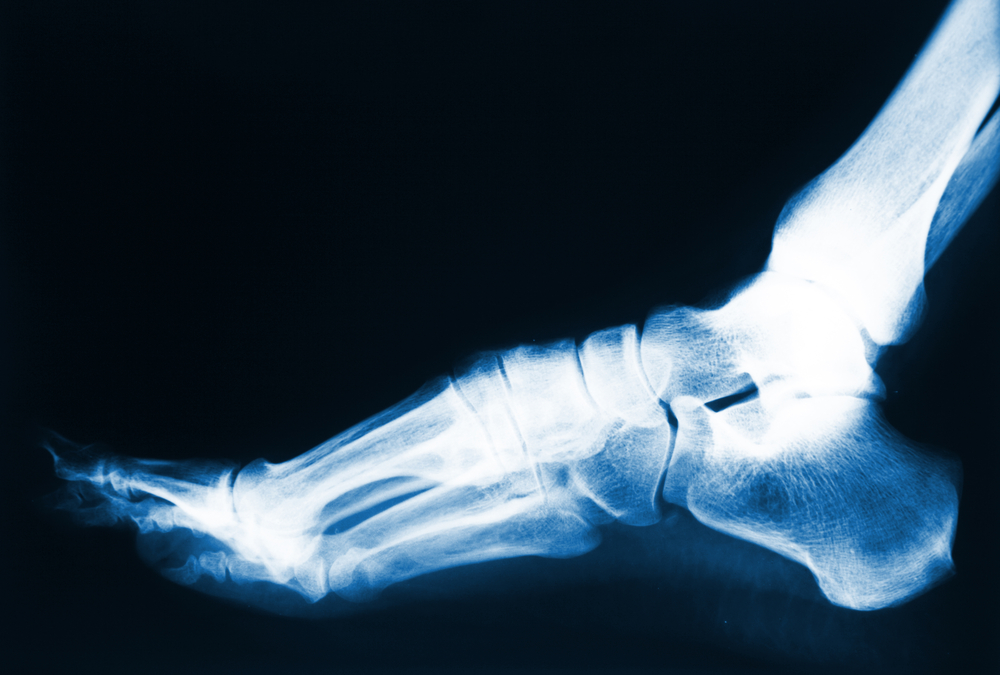Most foot issues can be managed conservatively, and with non-invasive treatments but there are times when foot surgery might be recommended. For some patients, it might be necessary to correct an underlying issue that is causing foot pain or other problems.
Reasons Why Foot Surgery Might Be Recommended
Conditions
Arthritis
People who have arthritis in their feet or ankles might undergo surgery to fuse two or more bones together so they no longer move. All cartilage is removed from the joint and the bones are fused together with pins, plates, screws, or a combination of the three. While you’ll be a bit more inflexible in the fused joint, your pain will lessen because it no longer moves independently. The joint will also be more stable as well.
Hammer Toe
If you have hammertoe, which is a condition when your toe is permanently bent downward, you may be experiencing pain because the weight of your footfalls are pressing the toe down continually. A surgical procedure to remove part of the toe bone or to fuse a joint in the toe can realign it so that it does not bend downward when you walk. A wire may be temporarily or permanently placed to keep the toe aligned.
Bunions
Bunions do not always require surgery, but if they are severe or involve the joint, a surgical procedure may be necessary. Usually, bunions will be treated by changing your shoe width or inserting pads in your shoes first, but if these non-invasive treatments don’t work, we may suggest bunion surgery. A painful bunion that is prohibiting you from participating in your daily activities or a bunion that is causing problems for other toes should be corrected surgically.
Heel Spurs
This condition occurs when a calcium deposit has caused a bone to protrude by as much as a 1/2 inch on the underside of your heel. Heel spurs can make it extremely painful to walk and are often associated with plantar fasciitis, which is inflammation of the connective tissue that links the ball of your foot to your heel bone. Surgery can be performed to release the plantar fascia tissue or to excise the spurs to provide pain relief.
Rheumatoid Arthritis
This condition often causes foot pain in the metatarsals, or the long bones, of the feet behind the smaller four toes. In severe cases, where these bones are causing significant pain, surgery may be conducted to remove the metatarsal heads that form the ball of the foot. Rheumatoid arthritis causes the joints in the feet and the ankles to degenerate and causes deformity. These deformities can be painful, resulting in the need for surgery to correct them.
Deformed, Damaged, or Infected Toenails
Not all toenails that are deformed, damaged, or infected need to have surgery, but some do. These procedures are typically minor in nature and involve an in-office appointment and local anesthetic. You can usually return to your daily activities immediately after surgery. You may undergo an avulsion, which is a non-permanent solution that relieves the pain but allows the nail to grow back, or a matrixectomy, which destroys the root so that the nail won’t regrow.
Morton’s Neuroma
This is a condition that is characterized by the thickening of the tissue around at least one of the nerves leading to your foot. It can cause a burning, stinging, or numb feeling in your foot. It usually occurs in the nerve between the metatarsal heads located in the ball of your foot. Removing the enlarged tissue around the nerve relieves the burning and stinging feelings, but some numbness usually remains because a part of the nerve tissue is removed.
Fractures and Tears
In most cases, fractures and ligament tears will require surgery. Sprains and small tears might be able to heal themselves, but large tears or ruptures should be fixed through a surgical procedure. Non-displaced fractures may not need surgery, but displaced, compound, or open fractures will require surgery. Non-displaced fractures can be treated with non-invasive methods but will be monitored to determine if surgery may be a better option if other treatments are not working very well.
Skin Conditions
Many skin conditions are successfully treated without surgery, but warts, moles, fibromas, and lipomas can occur anywhere on the foot, including the sole, and can cause pain. They can also rub against footwear and become irritated or inflamed. Sometimes, they may need to be removed and biopsied to ensure they aren’t cancerous. More extensive surgeries on the skin will take place in an operating room, but most minor skin surgeries are in-office procedures that are performed under local anesthesia.
Other Reasons
Conservative Treatment Hasn’t Worked
Most podiatrists will attempt to treat your foot conditions conservatively first, often by suggesting shoe changes, exercises, shoe supports, and other non-invasive methods. They may also try cortisone shots, which can provide pain relief by reducing inflammation and allowing time for your foot to heal. While these shots do not address the underlying cause of your foot problem, they do eliminate the symptoms so that you can work on fixing the root problem through non-surgical methods.
If these conservative treatments are not working, or they are only minimally effective, you should consider surgery. This will be a decision you’ll make in conjunction with us, as your podiatrists. We will consider all treatment options available to you before recommending surgery, but in some cases, that will be the action that relieves your pain. We will also determine if having surgery will prevent your condition from worsening, which is a concern with many foot issues.
You Are Experiencing Daily Pain
If you’re unable to participate in daily activities because of pain in your foot, surgery may be the best option. This is because conservative treatments take time to work, and you may not have the time to devote to that process. Your pain could be interfering with your ability to earn a living or keeping you from engaging with family and friends. There will be some downtime with surgery, but you won’t have to wait for treatment to work.
Your Condition Recurs
Sometimes, conservative treatment of a food condition is effective for a while, but then it either stops working or your condition recurs after having been relieved for a period of time. In this case, it might be a better option to get surgery on the condition to prevent it from coming back repeatedly. Surgery can remove this concern from your life forever by making sure your condition is resolved for good.
Hardware Has Come Loose
If you’ve previously had surgery on your foot and hardware such as screws, plates, or pins were inserted, these items can come loose, or need adjusting, although it doesn’t happen very often. If they do become loose, though, your pain might return. A repeat surgery will likely need to be performed to replace the hardware and re-secure it in your foot. On occasion, the hardware may even be removed entirely if the need for it is no longer present (i.e. bones have healed).
Getting foot surgery is a very personal decision that should be taken seriously and discussed with us during a consultation. Contact one of our Island Foot Clinics in Kelowna, Nanaimo, Victoria, Campbell River, Prince George, Terrace, or Williams Lake and schedule an appointment today.

